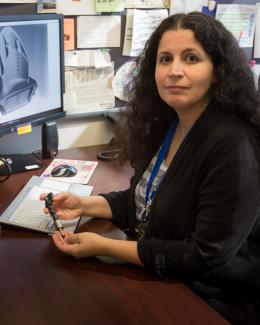Abstract
Water retention curves are essential for understanding the hydrologic behavior of partially-saturated porous media and modeling flow transport processes within the vadose zone. In this paper we report direct measurements of the main drying and wetting branches of the average water retention function obtained using 2-dimensional neutron radiography. Flint sand columns were saturated with water and then drained under quasi-equilibrium conditions using a hanging water column setup. Digital images (2048 x 2048 pixels) of the transmitted flux of neutrons were acquired at each imposed matric potential (~10-15 matric potential values per experiment) at the NCNR BT-2 neutron imaging beam line. Volumetric water contents were calculated on a pixel by pixel basis using Beer-Lambert’s law after taking into account beam hardening and geometric corrections. To remove scattering effects at high water contents the volumetric water contents were normalized (to give relative saturations) by dividing the drying and wetting sequences of images by the images obtained at saturation and satiation, respectively. The resulting pixel values were then averaged and combined with information on the imposed basal matric potentials to give average water retention curves. The average relative saturations obtained by neutron radiography showed an approximate one-to-one relationship with the average values measured volumetrically using the hanging water column setup. There were no significant differences (at p < 0.05) between the parameters of the van Genuchten equation fitted to the average neutron radiography data and those estimated from replicated hanging water column data. Our results indicate that neutron imaging is a very effective tool for quantifying the average water retention curve.



